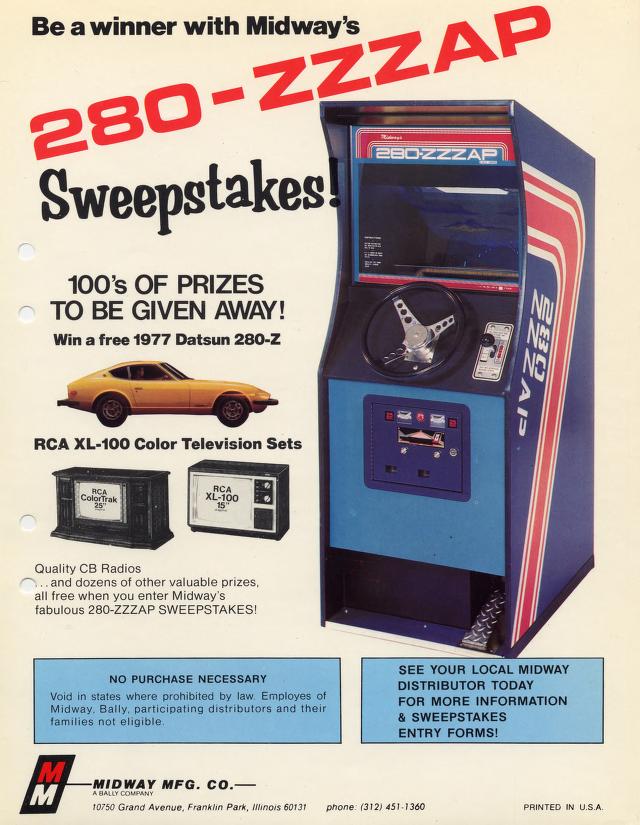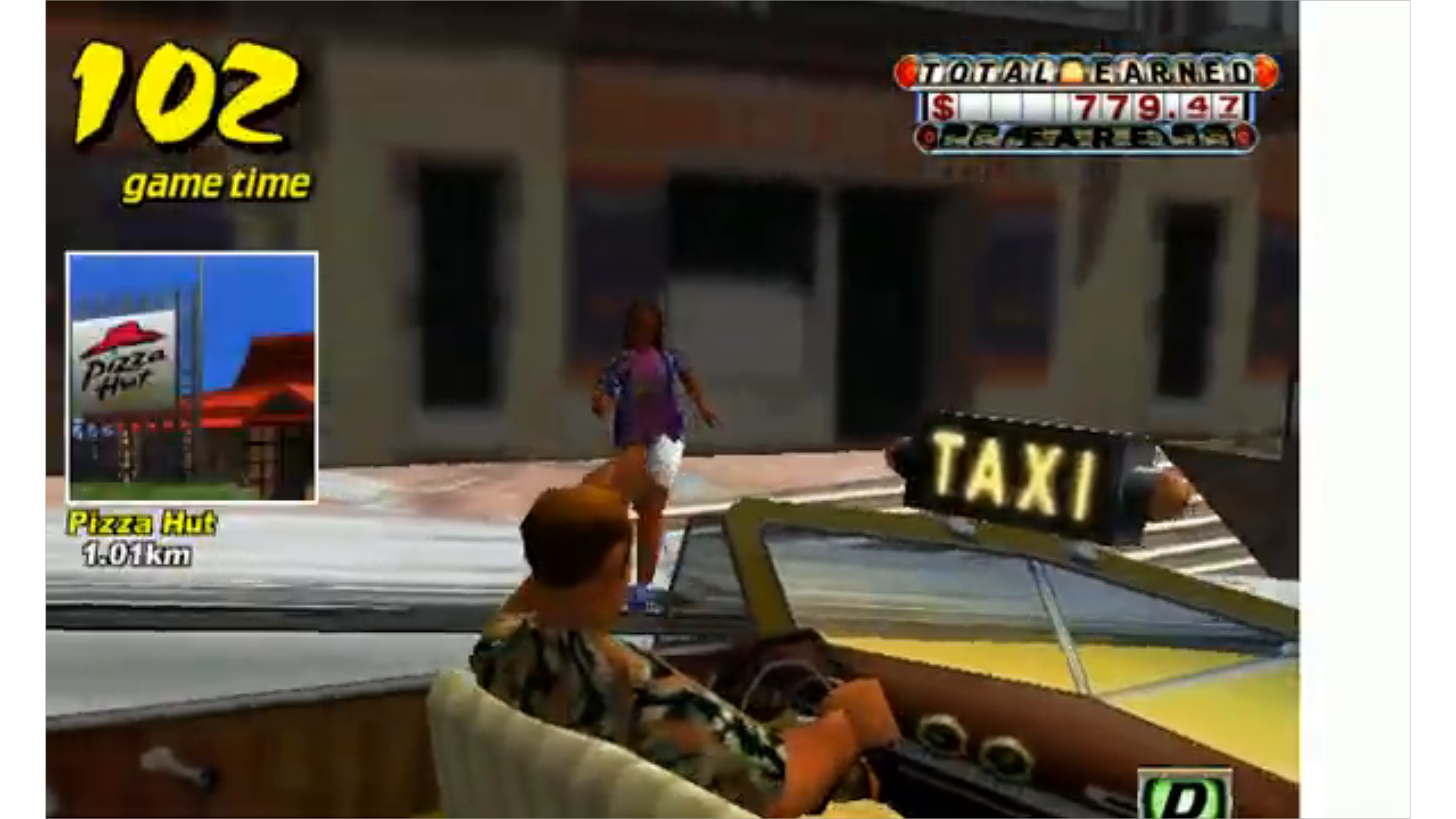With the explosion of the popularity of arcades in the 80s, many arcade games featured real life brands within the games themselves. Product placement in arcade games, along with pinball machines, started the trend in video games today.
I want to provide information about this history of product placement in video games. I will also list examples of arcade games with product placement.
The History of Product Placement in Video Games
Product placement in video games has been around since the 80s. The sneaky advertising tactics were used in popular arcade games.
Before we get into the strongest examples of product placement in arcade games I think it is important to dive into brand placement on pinball machines.
Popular Brands and Products used on Pinball Machines
Electronic pinball machines have been around since 1976.
Just look at any popular classic pinball machine. Product placement on retro pinball machines has been the norm from their beginning.
Well, it is not exactly product placement as it is that these pinball machines were entirely themed around a brand from popular culture at that time.
These pop culture themes were maybe a little bit to promote the brand on the machine but it was more likely placed to be a familiar brand that would attract people to spend quarters to play the pinball game.
They were a billboard for popular movies, tv shows, and music groups. It had lights, sounds, and artwork showing off what the brand was all about. Pinball cabinets are perfect for attention grabbing. Even today, pinball machines are collected and displayed because they are pieces of art, along with allowing the owner to show off their brand loyalty or fanship.
Some of the most popular pinball machines include Twilight Zone, The Addams Family, Star Trek, Monster Bash, Metallica, and AC/DC.

Pinball machines were just a taste of product placement within arcades.
One of the first examples of product placement in video games is with the 1983 arcade game, Tapper.
Product Placement Game Examples
Tapper Arcade Advergame and Product Placement
Tapper is a simple arcade game where you play as a bartender who has to fill up glasses and throw them to customers.
The arcade game used product placement and was another example of an advergame, in which a corporate entity works with helping make the game.
The first version of Tapper was sponsored by Anheuser-Busch and contained an official Budweiser logo on the screen. With the Budweiser sign prominent in the background, it was assumed that the player was serving that brand of beer in the gameplay to thirsty customers.

The Japanese version of Tapper replaced Budweiser with the Suntory logo. Suntory is a popular Japanese whiskey company.
The arcade cabinet’s initial release was targeted at bars and other adult businesses. But because of Tapper’s increased popularity in family arcades, parents complained that the arcade game advertised alcohol to children.
This outrage caused family-friendly variants of the game to be made.
The ZX spectrum version of Tapper contained the Pepsi logo on the bonus screen.
The Atari 2600 had a version where the Mountain Dew logo was present.
Finally, in 1984, a new family-friendly Tapper game was released to arcades. This version was called Root Beer Tapper. There was no branding and the beer was replaced with root beer.
To see the product placement examples listed then head to the video at the bottom of the page.
Datsun 280 ZZZap: The First Advergame
The 1976 racing arcade game, Datsun 280 ZZZap, is the earliest example of an advergame.
What is an advergame?
An advergame is a way of advertising in video games where a company or corporation works closely with video game developers in designing the game for the sole purpose of advertising their product or brand within the game itself.
Datsun 280 ZZZap’s title, gameplay, cabinet design, and advertising campaign were an authorized branding effort from Nissan Motors, for their recently released car, the Datsun 280Z.
You are supposedly driving the car in the game, though the early graphics at the time made that hard to imagine. They did have the title of the car/game at the top of the screen while you were driving along winding roads.
Datsun 280 ZZZap had an unbranded version of the game called Midnight Racer. It was not as popular as the original and is a rare arcade cabinet to find.

Here is an example of an old advertisement from the classic arcade game. It was called the 280 ZZZap Sweepstakes, and featured the arcade cabinet. It also included a picture of the 1977 Datsun 280Z, which was a prize that could be won in the giveaway.
Sega’s Super Monaco GP Product Placement
Super Monaco GP is an arcade game released in 1989 by Sega. It’s a Formula One simulation racing game. It’s known to be one of the first games to have a rear-view mirror visible on screen.
Super Monaco GP was involved in a famous lawsuit because of unauthorized product placement.
Sega put in fake billboards along the race track that mimicked real brands and logos. The designs were just slightly off from the real world counterpart. They placed a flag that said “Marlbobo” on the title screen of Super Monaco GP. It was almost identical to the Marlboro cigarettes logo.

Philip Morris (the parent company of Marlboro) found out about this unauthorized product placement in the game and were not happy. Philip Morris filed a lawsuit for trademark infringement and also stated that Sega was marketing tobacco products to underage kids.
Sega was forced to replace the flag and billboards that copied the logo in all new versions of the Super Monaco GP arcade game. An older Sega game, called Flicky, was used in place of the Marlboro product placement for later iterations of the arcade cabinet.
Crazy Taxi Product Placement Examples
Sega also made Crazy Taxi, which was released to arcades in 1999.
The original Crazy Taxi is known for having a lot of product placement.
The product placement examples in the game are KFC, Tower Records, FLIA, The Gap, Levi Straus, and Pizza Hut.
Most of these real-life businesses were destinations where you had to drop-off passengers.

Sega bought licenses to use most of the logos and company names within the video game.
Re-releases of Crazy Taxi, such as on the PSP, do not have the product placement of the original as the licenses have expired. In the new versions they are replaced by fake businesses.
Teenage Mutant Ninja Turtles Pizza Product Placement
The 1989 beat’em arcade classic, TMNT, had a certain product scattered throughout and it was a perfect fit for the game…
Pizza Hut signs can be seen in the background throughout the entire game. The NES version even came with Pizza Hut coupons.

Crude Buster Arcade Game Product Placement
Crude Buster is a stylish beat’em arcade game from 1990.
The Japanese version of the game has the player punch a vending machine with Budweiser advertising on it in order to get drinks to pop out of it.
All other versions of the arcade game replace the Budweiser product placement with a generic “Power Cola” vending machine.

This is most likely because of legal issues in regards to trademark and advertising alcohol to underage kids playing the game.
Maru-chan de Goo Advergame Arcade Game
Maru-chan de Goo is an arcade game that is another example of an advergame. The product placement is part of the entire gameplay.
Maru-chan was made for arcades by Sega in 1997. Two players face off in ramen themed minigames.

Maruchan in the title of the game is in reference to the popular ramen noodle brand. The company’s logo is on the arcade cabinet and throughout the game itself. The whole game is about making ramen or eating it.
Full List of Product Placement in Arcade Games Video
Thanks for reading about the history of product placement in video games. Subscribe to the email list below for all the most important information on arcades.